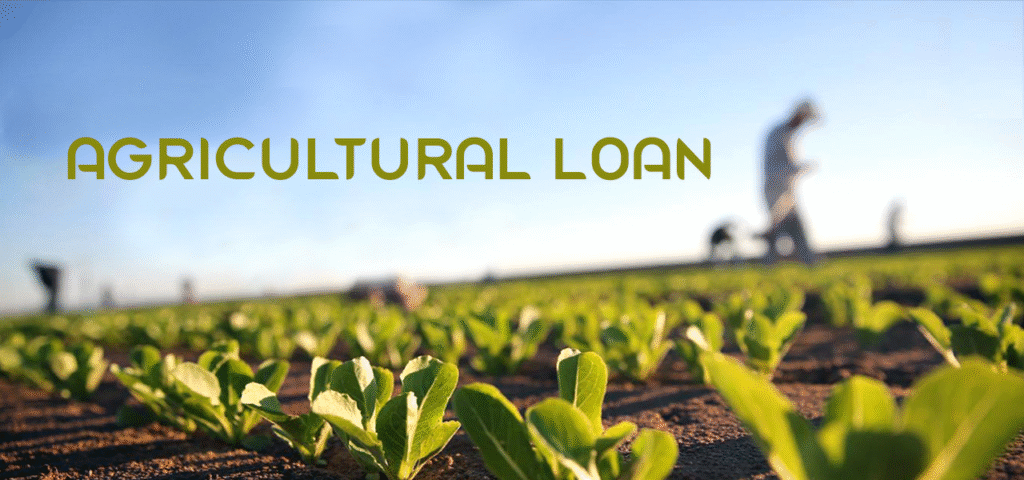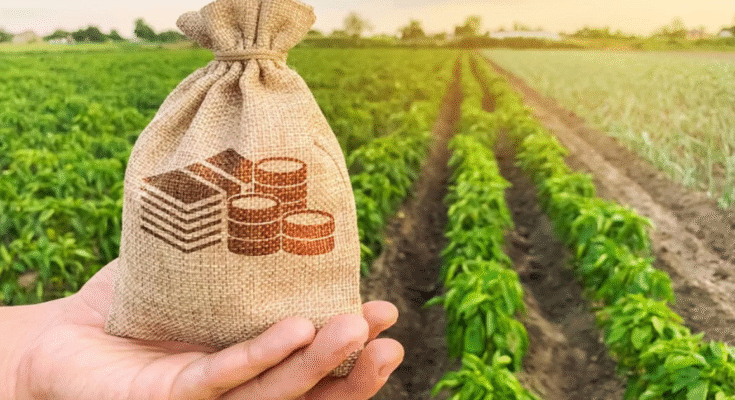Modern agriculture is rapidly evolving, and with it comes a growing need for financial support. Agricultural loans are essential tools for farmers looking to expand operations, embrace new technologies, and boost productivity. Whether it’s purchasing equipment, upgrading infrastructure, or navigating unpredictable seasons, agricultural loans empower both small and large-scale farmers to succeed in today’s complex farming environment.
The Importance of Agricultural Loans in Modern Farming

Financial Support for Growth
Farming is capital-intensive. From seeds and fertilizers to tractors and irrigation systems, the cost of running a successful agricultural operation is significant. Agricultural loans offer a practical way for farmers to secure the funds they need for expansion and efficiency.
Technology and Innovation
To remain competitive, modern farmers must invest in technological tools like automated equipment, drone surveillance, GPS-guided tractors, and precision irrigation systems. Loans make such advancements accessible to a broader range of farmers.
Sustainability and Eco-Friendly Practices
With growing environmental concerns, farmers are encouraged to shift toward sustainable methods. Agricultural loans often support renewable energy systems, organic farming practices, and water conservation techniques that contribute to long-term sustainability.
Managing Risk and Uncertainty
Farming is subject to market volatility, climate change, and crop failure. Agricultural loans can offer protection and stability, helping farmers maintain operations and recover from setbacks.
Categories of Agricultural Loans
Short-Term Loans
Designed to cover immediate operational expenses like seeds, fertilizers, pesticides, and labor. These loans are typically repaid after the harvesting season.
Medium-Term Loans
Ideal for purchasing farm equipment, tools, or livestock. The repayment period generally ranges from one to five years.
Long-Term Loans
Used for major investments such as purchasing land, building barns or irrigation systems, and expanding agricultural infrastructure. These loans can have repayment periods of up to 20 years.
Microfinance Loans
Targeted at smallholder and subsistence farmers, these loans are provided by microfinance institutions and cooperative banks to empower rural communities.
Top Agricultural Loan Programs Worldwide
1. USDA Farm Service Agency (FSA) Loans – United States
Provider: U.S. Department of Agriculture
Purpose: To support family farmers and ranchers who are unable to obtain financing from commercial lenders.
Features:
- Direct and guaranteed loans
- Farm ownership, operating, and emergency loans
- Low-interest rates
- Targeted support for minority and beginning farmers
Impact: Enables small-scale farmers to acquire land, manage operations, and sustain family-owned farms.
2. NABARD Agricultural Loans – India
Provider: National Bank for Agriculture and Rural Development
Purpose: To fund a wide range of agricultural activities and rural development projects.
Features:
- Crop loans, irrigation loans, and farm mechanization loans
- Interest subvention for timely repayment
- Assistance to self-help groups and cooperatives
Impact: A critical source of rural financing in India, enabling millions of farmers to modernize and improve their agricultural outputs.
3. Agricultural Credit Guarantee Scheme Fund (ACGSF) – Nigeria

Provider: Central Bank of Nigeria in collaboration with commercial banks
Purpose: To reduce risks faced by lenders offering credit to farmers
Features:
- Government guarantees 75% of the loan amount
- Covers crops, livestock, aquaculture, and agro-allied ventures
- Encourages commercial lending to the agricultural sector
Impact: Boosts private sector investment in agriculture and increases farmers’ access to credit.
4. European Investment Bank (EIB) Agricultural Loans – European Union
Provider: EIB in partnership with local banks and institutions
Purpose: Financing sustainable and climate-resilient agriculture projects across Europe
Features:
- Loans for agri-food businesses, agri-tech, and rural infrastructure
- Support for young farmers and women entrepreneurs
- Emphasis on green energy and innovation
Impact: Supports transformation toward sustainable food systems in EU countries.
5. Agricultural Credit Corporation (ACC) – Canada
Provider: ACC, a non-profit federal-level agricultural lender
Purpose: Provides low-interest cash advances to farmers against their stored or growing crops
Features:
- Up to CAD 1 million in advances
- First CAD 250,000 interest-free under the Advance Payments Program
- Flexible repayment schedules
Impact: Improves farmers’ cash flow and market access while reducing reliance on high-interest commercial loans.
6. Banco do Brasil Agro Loans – Brazil
Provider: Banco do Brasil (Brazil’s largest bank)
Purpose: To finance farming operations, machinery acquisition, and infrastructure development
Features:
- Special lines for family farming (Pronaf) and agribusiness
- Competitive rates and subsidized credit
- Flexible terms for seasonal and long-term needs
Impact: Drives agricultural exports and supports Brazil’s leadership in global agribusiness.
7. Agricultural Development Bank of Ghana (ADB) Loans
Provider: ADB Ghana
Purpose: Funding farming inputs, equipment, irrigation systems, and value chain development
Features:
- Credit lines for poultry, cocoa, maize, and rice producers
- Loans for women in agriculture and youth agri-startups
- Tailored repayment periods based on harvest cycles
Impact: Promotes food security and economic growth in Ghana’s agricultural sector.
8. Land Bank of South Africa Agricultural Loans
Provider: Land Bank of South Africa
Purpose: To support land acquisition, infrastructure, and production in agriculture
Features:
- Commercial and development loans
- Support for Black Economic Empowerment (BEE) farmers
- Government-backed risk-sharing mechanisms
Impact: Encourages inclusive growth and supports emerging farmers.
9. Rural Credit System – China
Provider: Agricultural Bank of China and rural credit cooperatives
Purpose: To provide affordable financing to rural farmers and agribusinesses
Features:
- Subsidized interest rates for grain production and eco-farming
- Loans for greenhouses, irrigation, and mechanization
- Use of digital platforms for access and disbursement
Impact: Strengthens rural infrastructure and helps modernize China’s agricultural landscape.
10. New Zealand Agri Loans
Provider: ANZ, Rabobank, and other commercial lenders
Purpose: To finance high-tech farming, sustainable practices, and export readiness
Features:
- Seasonal finance options
- Agri investment loans for land and equipment
- Emphasis on climate resilience and regenerative agriculture
Impact: Positions New Zealand as a leader in sustainable, export-oriented agriculture.
Key Benefits of Agricultural Loan Programs

Accessibility
Government support and microfinance institutions make loans available even in remote areas.
Customization
Loans are tailored based on the crop cycle, size of the farm, or type of produce.
Economic Empowerment
They promote financial inclusion, particularly for marginalized groups like women and smallholders.
Technological Advancement
Encourages adoption of innovative practices such as smart farming, vertical agriculture, and renewable energy.
How to Apply for an Agricultural Loan
Step 1: Assess Your Requirements
Determine how much funding you need, for what purpose, and what type of loan suits your goals.
Step 2: Gather Documentation
Prepare land ownership documents, income proof, farming records, bank statements, and a business plan.
Step 3: Choose a Lending Institution
Select a bank, cooperative, or microfinance institution based on their offerings and terms.
Step 4: Submit Application
Fill out the loan application with accurate details and submit all required documentation.
Step 5: Await Evaluation and Approval
Lenders may conduct on-site verification, credit assessments, and interviews before sanctioning the loan.
Step 6: Disbursement and Utilization
Once approved, the loan is disbursed either as a lump sum or in phases, depending on the terms.
Challenges Farmers Face in Accessing Loans
- Lack of collateral and credit history
- Inconsistent documentation or land ownership issues
- High interest rates from commercial lenders
- Limited financial literacy
- Delayed processing or bureaucratic hurdles
Solutions to Improve Agricultural Lending
- Digitization of land records and loan applications
- Financial literacy campaigns
- Government-backed credit guarantees
- Mobile banking access for rural areas
- Transparent, farmer-friendly loan terms
Also Read : Steps To Secure A Loan Credit Union For Your Financial Needs
Conclusion
Agricultural loans are more than just financial tools—they are lifelines that enable farmers to innovate, grow, and contribute to national food security. Whether you’re a smallholder in India, a grain farmer in the U.S., or part of a cooperative in Africa, access to tailored agricultural financing can transform your productivity and profitability. With a wide range of loan programs available globally, farmers now have more opportunities than ever to advance their practices, embrace sustainable methods, and build resilient agricultural businesses. Choosing the right loan depends on understanding your needs, researching your options, and preparing a strong application.
FAQs
What is the difference between a short-term and long-term agricultural loan?
Short-term loans are for operational expenses and typically repaid after a harvest season, while long-term loans are for significant investments like land or infrastructure and have longer repayment terms.
Can small farmers get agricultural loans?
Yes, through microfinance institutions, cooperatives, and government programs designed specifically for smallholders and marginalized farmers.
Are agricultural loans available without collateral?
Some programs, especially microloans and government-backed initiatives, offer unsecured loans. However, larger loans often require collateral such as land or machinery.
How do interest rates vary for agricultural loans?
Interest rates vary depending on the provider, loan type, and country. Government-backed loans typically offer lower rates compared to commercial banks.
What documents are needed to apply for an agricultural loan?
Common documents include land ownership papers, identification, business plans, bank statements, and income proof.

